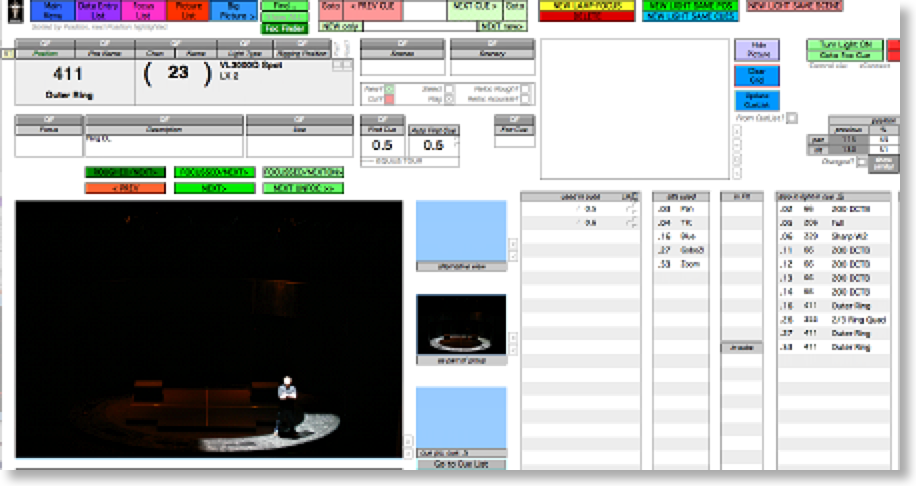
FocusTrack is a database system designed for keeping track of how lights are used in shows.
Originally designed to allow the focus of automated lanterns to be comprehensively documented, it now offers a complete rig management system for recording every facet of both conventional and automated lighting, including rig set-up, dimmer set-up, gobo and colour loads as well as focus.
It’s driving principle is to reduce the amount of manual data handling that people working on shows still do - manually looking up information from the showfile, typing cuelists into Excel, cross-checking Lightwright to the console patch, manually tracking how moving lights are used during a show. Used with Eos, grandMA 1 or 2, and Strand 300/500 consoles, FocusTrack can automate much of this work, generating list of which moving lights are used in which positions in which cues, listing lights that are never used, detailing which colours and gobos in moving lights and scrollers are actually used. This can save countless hours of tedious, error-prone work.
It can be used for productions of any type, but is perhaps of most use for theatrical productions, particularly:
• touring shows, where the focus of the lighting rig (conventional and moving lights) has to be re-created at regular intervals
• long running shows, where a reference is needed so that things don’t creep away from their intended focus over time.
• rep companies - theatre, opera, ballet - where shows come back time after time, months or years after they were first created.
• transfers and new productions, where a reference from the original production is needed either as an aide-memoire, or because you’ve changed parts of the rig - moving to a new type of moving light, for example.
• buildings - where time has been spent lighting a building beautifully, why not make sure everyone knows how to keep it looking beautiful?
The result is a complete, accurate record of every facet of the show lighting - where the lights are pointing, why they’re pointing there, when they’re used in cues, what those cues look like, ideal for leaving with the crew who will have to run and maintain the show while also giving the designer a complete record when later having to re-create or modify the production.